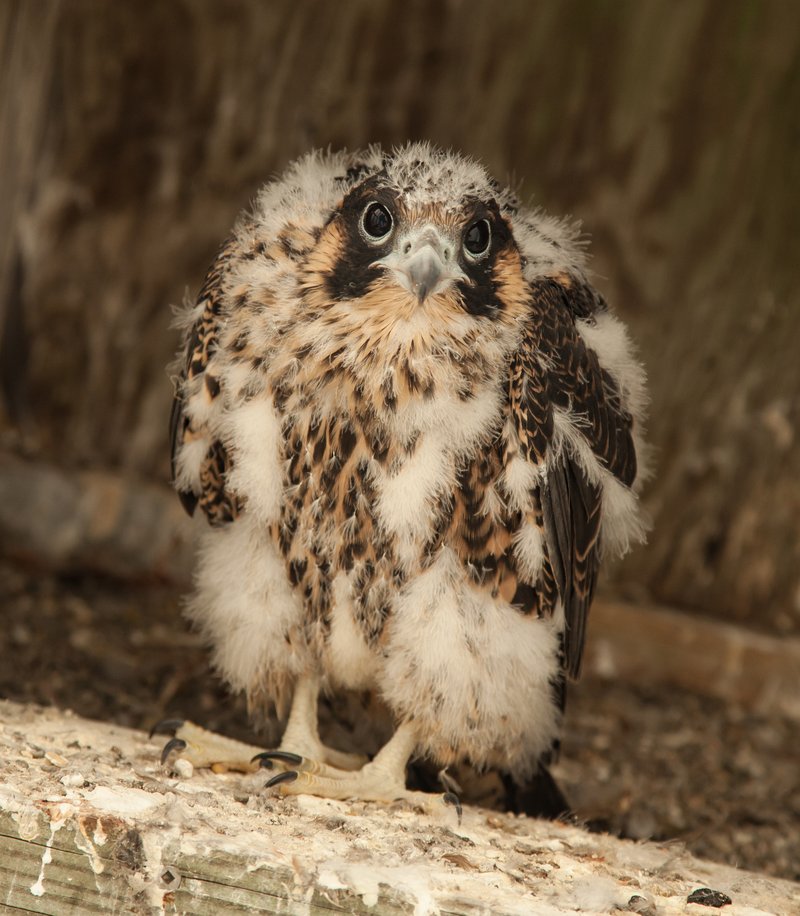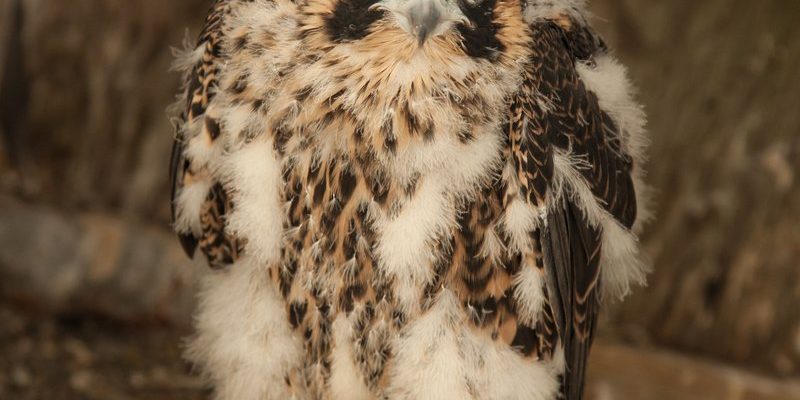
Unlike us humans who might spend years preparing for parenthood, peregrine falcons have a more natural instinct when it comes to raising their offspring. They may not have childproofed the nest or read parenting books, but they’ve perfected their own methods over centuries. Let’s dive into how these feathered parents transform a cozy scrape into a thriving nursery for their little ones.
Choosing a Nesting Site
Finding the right place to raise a family is crucial, whether you’re a person or a peregrine falcon. These birds are known for nesting on *cliffs and tall buildings*, where they can survey their territory and keep an eye out for potential threats. Use your imagination: perched high above on a rocky ledge, a falcon can spot prey from great distances and ensure that their young are safe from harm.
During the breeding season, typically in early spring, peregrines spend time scouting their favorite spots. They’re quite picky about where they settle down. Ideal locations are usually sheltered and have plenty of access to food, which brings us to the next important aspect of falcon parenting.
Importance of Food Supply
Did you know that peregrine falcons are among the fastest birds in the world? They can dive at speeds over 200 mph to catch their dinner, mainly consisting of other birds. Once they’ve chosen the nesting site, the parents start hunting relentlessly—think of it as stocking up their pantry before the babies arrive.
This *food supply* is critical for the survival of the chicks. The female falcon, often larger than the male, focuses on the nest and incubating the eggs, while the male provides food. He’s like the designated grocery shopper, ensuring mom and the future chicks have everything they need to thrive. It’s a well-orchestrated team effort that showcases their deep commitment to family.
Building the Nest
Peregrine falcons don’t spend a lot of time building nests in the traditional sense. Instead, they typically lay their eggs in a simple scrape—a shallow depression—on a ledge or cliff. It’s as if they’re saying, “We don’t need much; we just need love and a cozy spot!”
The female will line the scrape with a few feathers or bits of vegetation for comfort. You might wonder about shelter from the harsh weather conditions. Fortunately, their choice of location—high cliffs or urban buildings—often provides natural protection from rain and wind, ensuring the chicks can stay snug and warm.
Egg Laying and Incubation
Once the nest is ready, it’s time for the female to lay her eggs. Typically, she’ll lay about three to four eggs, but sometimes more. These eggs are usually a beautiful, pale blue with a speckled pattern that helps camouflaged them against predators. You can imagine the excitement of watching those little eggs being lovingly tended to.
Incubation lasts about 29 to 32 days, during which the female spends most of her time on the eggs, only leaving briefly to eat and stretch her wings. Meanwhile, the male continues to hunt and bring food back to the nesting site. This period is delicate but also essential, as proper care ensures the eggs develop successfully into healthy chicks.
Chick Hatching
Once the incubation period is over, the real excitement begins. The chicks, called *eyases*, begin to hatch. This is a slow process; some eggs may hatch a day or two apart. Watching a chick break through its shell is like seeing a tiny miracle unfold right before your eyes. The first thing the new parents do is to help their little ones out of their shells, lending a supportive beak when needed.
After hatching, the chicks are initially covered in a soft down that keeps them warm. They rely heavily on their parents for food, warmth, and safety. Now, the duo must work together to ensure their young ones receive enough nourishment to grow strong.
Feeding the Chicks
Feeding is where the falcon parents shine. The male brings fresh prey, often smaller birds, and presents it to the female. She tears it into manageable pieces and feeds the chicks. Imagine that moment: the chicks squawking and flapping their tiny wings, eagerly competing for their meal.
As the chicks grow, their demands increase. They quickly develop a voracious appetite, and both parents take turns hunting and feeding. This cooperative feeding not only provides the chicks with essential nutrients but also helps them grow to be robust fledglings ready to face the world.
Training the Young Falcons
Once the chicks reach about six to seven weeks, they start to gain their independence. It’s time for their first flying lessons! The parents encourage them to *branch out*, quite literally. You’ll see them fluttering around the nest, testing their wings, and eventually hopping to nearby ledges.
This is an exhilarating time, filled with both excitement and trepidation. Here’s the thing: while the chicks learn to fly, their parents continue to support them, sometimes even bringing food to teach them how to hunt. It’s like a tough love approach to parenting—pushing them to try new things while still keeping them safe.
Fledging and Independence
The moment comes when the young falcons take their first flight, called fledging. It’s a pivotal milestone in their development. When they do finally leave the nest for good, they’re not entirely on their own just yet. For a short while, the parents continue to keep an eye on them, providing occasional food and guidance.
As the fledglings practice their hunting skills, they begin to understand their role in the larger world. Over time, they’ll learn to rely on themselves and hunt for food independently. By the time they reach about ten weeks old, they’re almost ready to embark on their own adventures, fully equipped with everything they’ve learned from their dedicated parents.
The Lifelong Bond
Peregrine falcons are known for forming strong pair bonds, which often last for years. After raising their young, the parents might continue working together as a team, sometimes returning to the same nesting site for subsequent breeding seasons. This long-lasting connection adds another layer to their extraordinary tale.
So, what can we learn from these incredible birds? The way peregrine falcons raise their young is a beautiful reminder of the value of teamwork, resilience, and commitment to family. As they navigate the challenges of parenting, they showcase the essence of dedication and love, making their journey through the wild’s trials and tribulations truly inspiring.
In conclusion, peregrine falcons raise their young with an instinctive grace that captivates anyone who takes the time to watch. From choosing the right nesting site to guiding their fledglings on their first flights, these birds remind us how deeply rooted the connections between families can be. As you think about these remarkable creatures, you might find yourself inspired by their commitment to nurturing the next generation.

